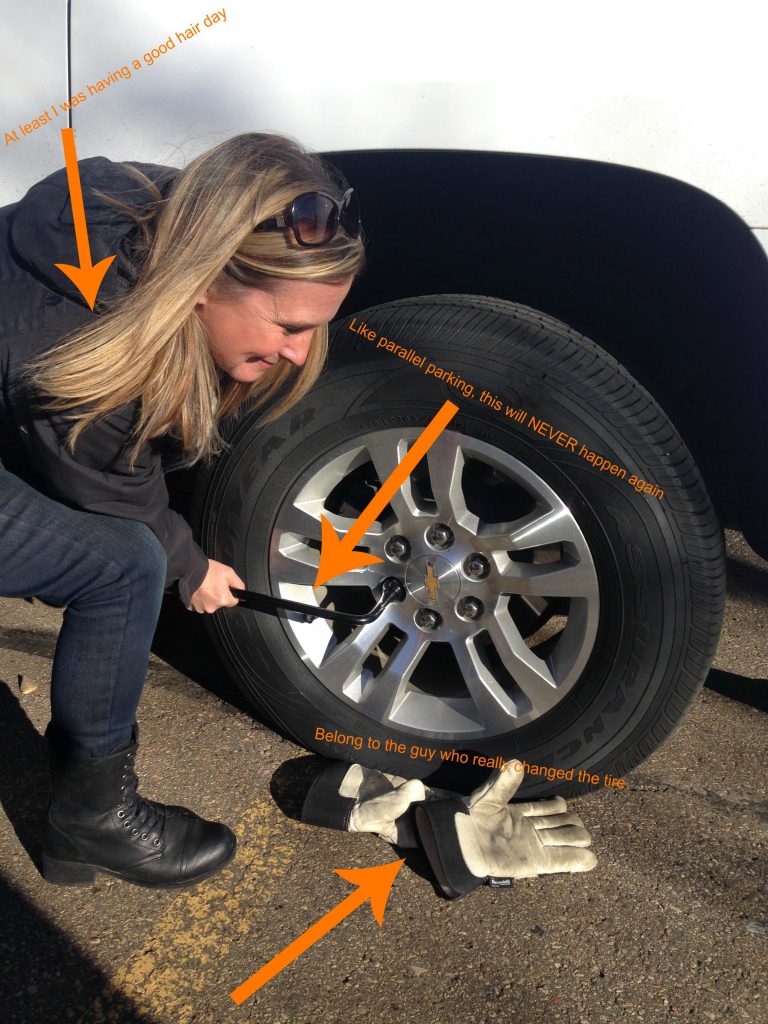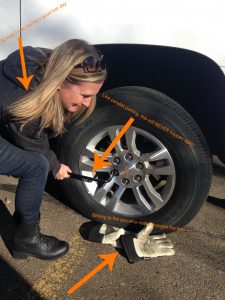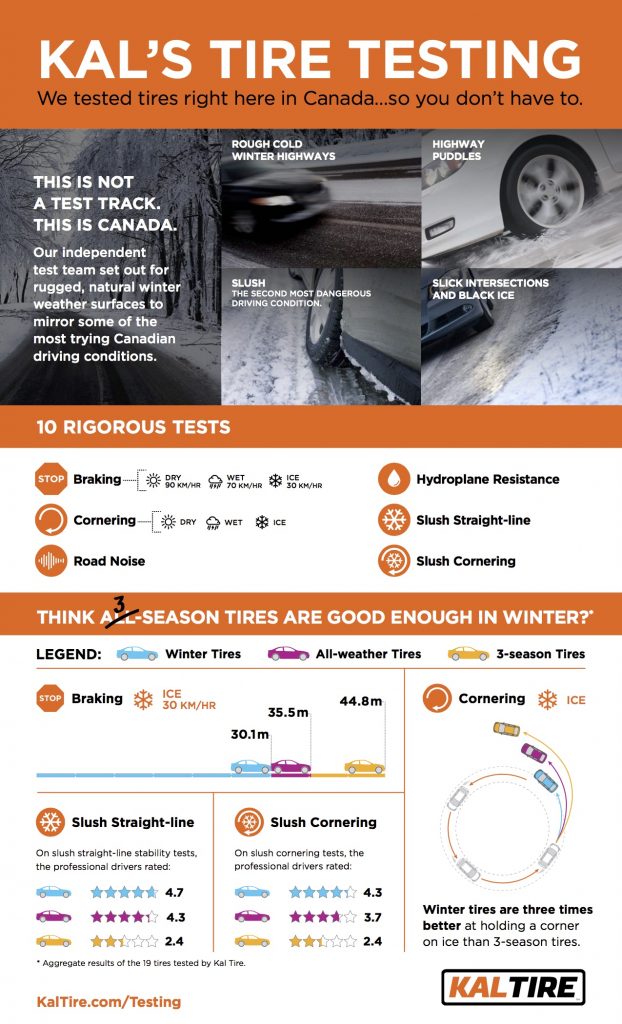I was recently invited to attend a Kal Tire driving event in Edmonton and obviously, I surmised, it was because of my mad driving skills. I figured they’d heard how I can do 0-60 without spilling my tea, how I can effortlessly do a shoulder check AND trash talk the idiot next to me, and about my natural ability to avoid parallel parking at all costs. This must be it, because why else would they invite a middle-aged women who knows nothing about tires to test tires. Hmmm, maybe they had an agenda.
As it turns out, my driving career has been a lie. For example, did you know that your hands are not supposed to be at 10 and 2 on the steering wheel? The pros always have their hands at 9 and 3. Furthermore, did you know that professional drivers NEVER cross their hands over each other when steering a car? As it happens, my extra cool way to turn into the spa is all wrong. Did you also know that the time to put your winter tires on your car is not when the snow hits the ground but rather when the temperature gets below 7C? That’s like, August, in some parts of Canada, which brings me to my next point. Those all-season tires you think will take you through the whole year? LIES.
All-season tires are terrific for our American friends who never get below 7C. While some might call that winter (oh you’re so cute Florida) let’s be real—Canada is a special place. Canadians like to prove how tough we can be not just on Earth but in the galaxy. Yeah, that’s right, last year Ottawa was colder than Mars, and we still got out in it. We drove to work, picked up our groceries, got the kids to activities and even hit the mall for shopping, proving that a) we are hearty stock, b) nothing can keep us from a good sale and c) we could totally inhabit Mars.
Still there are deniers.
Despite the fact that winter returns year after year, there are some who like to pretend it’s not coming and then WHAM, first snowfall and people are in ditches everywhere. The first step my compatriots is admitting it. Say it with me. Winter is coming. Good. Now let’s address what you need to know NOW before the snow actually gets here. Thanks to my trip to Edmonton, I’m a bit of Kal Tire keener now.
FIVE THINGS YOU NEED TO KNOW ABOUT WINTER TIRES
- Winter tires, on average, stop 14.68 metres sooner on ice as compare to 3 Season tires (AKA All-Season). “So what?” you say? Well 14.68 metres might be the difference between stopping in plenty of time and still having time to hit the mall on the way home or hitting the back of that car in front of you and not getting home for hours.
- All-weather tires, on average stop 77 cm sooner on wet pavement (from 70km/hour) and 33 cm sooner on dry pavement then 3-season tires. Again, stopping faster is better. Full stop. (no pun intended)
- Winter tires are nearly three times better at holding corners on ice than 3-seasons. If you’ve ever lost control of your car on ice, then you know how terrifying that out-of-control feeling can be. If you’ve lived in Canada long enough, you also know that ice is an ongoing issue.
- Studless winter tires aren’t noisy! On average all-weather and 3-season tires emitted the same amount of road noise, and winter tires were actually 1.6 per cent QUIETER than all-weather and 3-season tires.
- Slush is the second most dangerous driving condition after ice in Canada. Professional drivers rated winter tires 4.7 out of 5 stars, while 3-season tires were rated a paltry 2.4 out of 5 stars in slush straight-line tests.
HOW KAL TIRE DOES ITS TESTING
Kal Tire is serious about tire testing. A family owned business, they want their customers to have the best information available to them when making a decision on tires. Until this event, I can honestly say I’d never given much thought to the wheels on my car. No more. The most important things in my life get in my car day after day and I want to know that I have the best tires I can get on my vehicle.
Kal Tire insisted on testing 19 of their most popular tires in rugged, natural winter conditions that Canadians face everyday. There was no testing on a “controlled test track”. They tested in what we really drive on, in a number of conditions, like braking on dry, wet, and icy roads, cornering, road noise, hydroplaning, slush straight-line stability and slush cornering. Kal Tire insisted that these tires be tested by an independent testing group led by an international race car drive (yes, the same guy, who has me questioning if I ever really knew how to drive at all). To ensure accuracy, even the most minute variables, such as track and wind temperature, were monitored. Identical vehicles were used and tests were repeated numerous times at identical speeds, always with the driver not knowing the specifics of the tire being tested at the time. Honestly, I’m exhausted just thinking about it. I’m just happy someone else did all the the science-y stuff for us because the results MATTER.
WHAT THIS MEANS FOR THE AVERAGE JANE
If you’ve got this far, it means you can’t ignore your tires anymore. It means you can tell your partner he’s wrong when he insists the winter tires can wait. It means you now know the difference between all-season and all-weather tires, and that you can’t pretend all-season will do the trick anymore. It also means you’re now a Kal Tire Keener, just like me. Welcome to the club ladies.
Added bonus. I changed my very first tire in Edmonton. Okay, fine. In “theory” I changed my first tire and although I won’t admit this to my husband, if I absolutely HAD to change my own tire, I could now do it. I think this picture sums it up best.

Special thanks to the KalTire team for inviting Life in Pleasantville to Edmonton to participate in winter tire testing. While my flight and accommodations were covered to attend this event, I have not been compensated for this post. All thoughts and opinions are mine.



 Why I Believe Santa Claus Is Real Even If My Kids Don’t Anymore
Why I Believe Santa Claus Is Real Even If My Kids Don’t Anymore